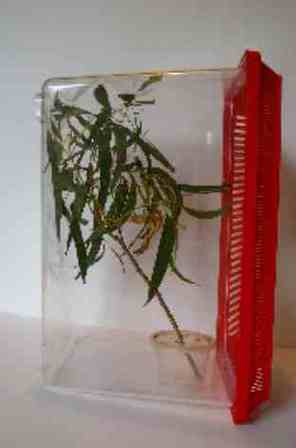Tips: Caring for your Insectpet
General Insect Care and Enclosure Suggestions.
Detailed care information is provided with all insects sold, but the following general care information should be considered prior to purchasing an insect pet.
All insect pets must be kept away from insecticides. Pesticides of all types must not be used in the same house as an insect pet (don’t forget that automatic dispenser!).
Stick Insect General Care.
The room temperature and food plants required is listed beside each Stick Insect species on The Insects For Sale page. Enclosures should not be placed in direct sunlight as this may get too hot, nor should it be in a very draughty area. Stick insects require fresh foliage on a regular basis - usually about twice a week depending on how quickly it dries out. A daily mist spray of water onto their foliage provides the stick insect with some humidity and a source drinking water and keeps the leaves fresh longer. Humidity is important because Stick Insects moult (shed their outer skeleton) to grow and if it is too dry stick insects can have difficulty moulting. Although daily care is recommended, stick insects will readily survive 2-3 days without care provided they do not get too hot, cold or dry. Different species of Stick Insect can be housed together provided there is sufficient room. Stick Insects live from eight to eighteen months. This age variation is due to many factors, including species type, temperature, and sex of the Stick Insect; females normally live longer than males!
Stick Insect Enclosure Suggestions.
Stick Insects must have enough room in their enclosure to be able to hang to moult without disturbance. A suggested minimum size enclosure is listed against each species on the Insects for Sale page. Insectpets offers thier unique, economical easy to assemble Insectpet House. Alternatively pet shops often have large plastic terrariums suitable for smaller Stick Insects only, more specialised larger terrariums or reptile enclosures are suitable for the larger stick insects. Avoid enclosures which have knitted shade cloth type material as the covering, as can get their feet caught which may result in the loss of a leg. Also avoid enclosures that have small openings as this makes it particulary difficult to replace foliage branches and to get your Insect pets in and out without damaging them.
There are also a variety of enclosures you can make, some from items you may have around home already: A large polystyrene box, or a plastic tub or aquarium, with a secure mesh or netting lid all make a suitable enclosures.
 |
|||||||
 |
|||||||
|
Figure 1. Large plastic Terrariums make suitable enclosures for smaller Stick Insects. |
Figure 2. A cheap enclosure you can make: a polystyrene box with a mesh window.
|
||||||
Another idea for an enclosure can be found below, this enclosure is made of flexible acrylic sheeting and two heavy duty pot plant saucers, with mesh for a window. This makes a sturdy enclosure and is an ideal project for schools, prior to purchasing Stick Insects for pets.
 |
|
|||||||
